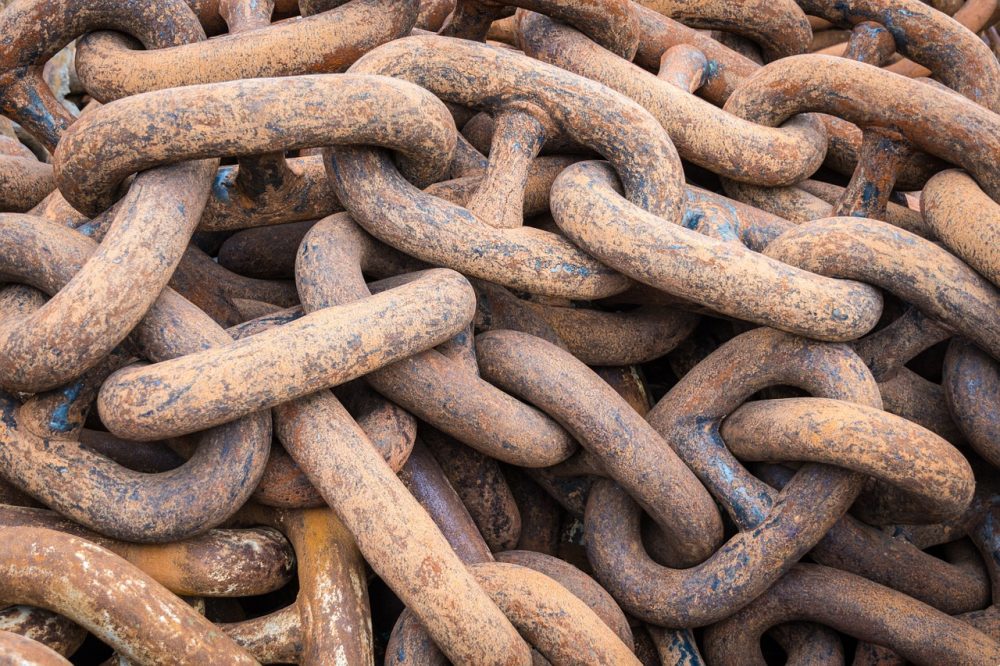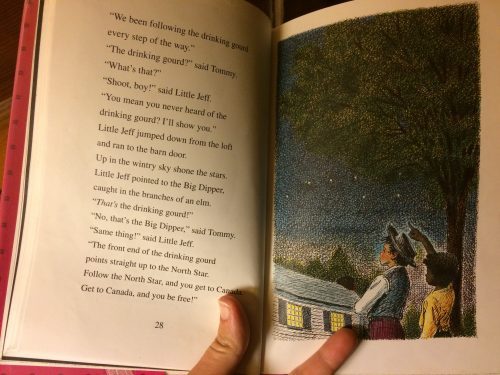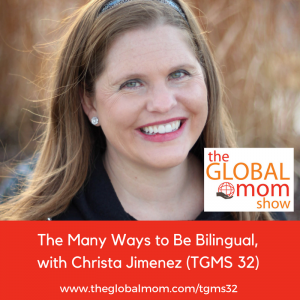
Teaching My Six-Year-Old About Slavery
Last night we read The Drinking Gourd: A Story of the Underground Railroad before bed. It’s not exactly a bedtime story, since it really requires some follow up discussion. I’ve talked about slavery before with my six-year-old, but I realized that while we have read stories about the Civil Rights era, we have not read many, or any, about slavery. I periodically had to stop during the book to explain some of the situations. But, when I tried to put the book down and said we would read the rest tomorrow, my son begged for me to continue. “I want to find out if they get to be free, Mama.” So, I read on until Jeff and Vinnie and their two kids are rowed safely across the river to the next station on the Underground Railroad. “Is it a true story, Mama?” he asked. “Yes, it’s true,” I said. “Maybe not these exact people, but it was true for thousands and thousands of people.”
When the book finished, my son wanted to know more about slavery, and when it ended. Although I started to say it ended a long time ago, I stopped myself when I thought about the millions of people still enslaved today. (The United Nations International Labor Organization puts the number at 21 million. Other organizations say 45 million.) I told my son that just last month 24 boys were rescued from slavery in Ghana. After a bit more discussion, we went to bed.
This morning, I found this video on the International Justice Mission (IJM) website, that shows the boys being rescued. I shared a portion of it with my son and we talked a bit more about the boys who were set free.
When I think about these boys–some of them the same age as my boy–I’m so saddened and then so thankful for organizations like IJM that are actively working to free people in bondage. Of course, this is not something that I necessarily want to talk to my son about. I wish I could say that slavery never happened, or that it ended with the Civil War in America, and that it doesn’t exist anymore. But it does persist. He was very curious about what type of people would have slaves, why they would have them, and whether or not they would be thrown in jail. We talked about greed and how people who enslave others are usually doing so because they benefit in some way. Applying it to our lives, I said “greed starts in your heart when you want to be the only one to have all the Legos, or all the cookies, or all the toys, and you don’t care about other people, you just want things for yourself.” He understood that. “But we can’t allow that greed to keep growing in our hearts, that’s probably why those people owned slaves, because they wanted money or some thing more than they cared about another person.”
I think it’s important not to distance ourselves and our motives from past or present evils of the world by saying things like “well those were bad people doing bad things.” We also have to recognize and teach our children to recognize that anyone can choose to oppress, anyone can choose to treat others poorly. In fact, many who do so would be considered “good men” by their families and friends. Often, people who oppress and enslave do so out of a sense of their own entitlement and desire to maintain their own or their family’s financial well-being. Greed then, if left unchecked, can ravish a soul and cause people to do things they never would have thought possible. Greed allowed slavery in the U.S. to continue formally for 245 years, and greed is what allows it to continue informally in our modern day prison system. Greed allows human traffickers to earn over $150 billion each year. Greed in the heart is where evil begins.
Did I share all these details with my six year old? No.
But we did start the conversation. We started it, and it likely won’t end anytime soon. It will be picked up again and again over time, adding more detail and nuance as the years go by, and slowly lifting the veil of innocence from his eyes and allowing the realities of the evils of this world to be seen. I hate doing this, and I know many parents wish they could let their children avoid seeing all the awfulness of the world. But whenever I do allow my six year old to see a bit of the pain that others are facing, I’m also allowing him to cultivate empathy, one of the most important traits for any child to develop. I’m allowing him the opportunity to have compassion (on someone besides his brother–although that’s important too). I’m allowing him to begin to understand the world and his place in it–as someone who can change things or someone who can remain silent.
In the book The Drinking Gourd, the young white boy Tommy chooses to lie to protect the family of black slaves hiding in his father’s hay wagon. Tommy’s dad talks to him at the end of the book saying
I believe in obeying the law, but you and I broke the law tonight. . . . right now the law says Jeff and Vinnie are another man’s property same as a horse or a cow . . . I can’t obey that law. That’s why I hate it. It’s wrong!”
Tommy’s dad allowed him to enter in to the role of helper in a frightening situation. He taught Tommy that helping others was worth risking your own life. He even put his own son in harm’s way to do what was right. Today, the least I can do is share with my son and give him the opportunity to respond. I won’t push it, but I will present it. And I’ll answer the questions as they come.
Through IJM, you can give specifically to help more boys like the ones who were rescued from forced labor on fishing boats in Ghana.
What’s your philosophy on teaching your children about slavery, human trafficking, and other evils of the world? I’d love to hear your own stories of teaching your kids about history and present day. You can chime in over in the Facebook Group, or send me a voicemail using the red button on the right hand side of this page.
And, if you’d like a free copy of my PDF Guide: 10 Ways to Create a Global Home–No Matter Where You Live, you can get one here.


 Previous Post
Previous Post Next Post
Next Post




